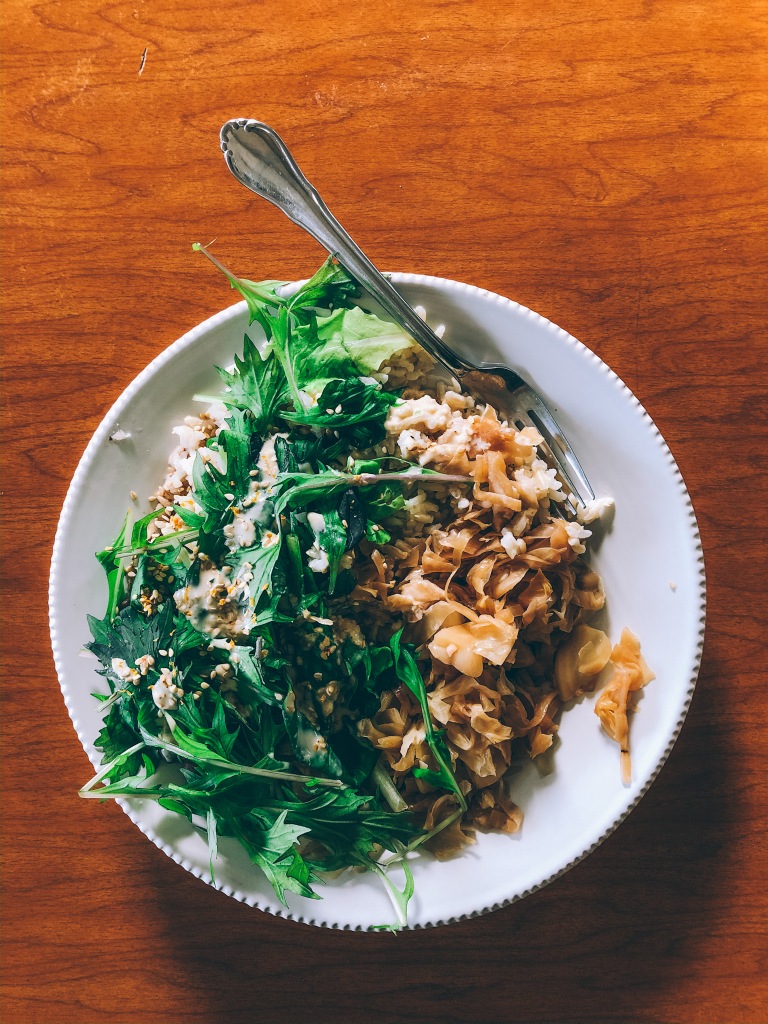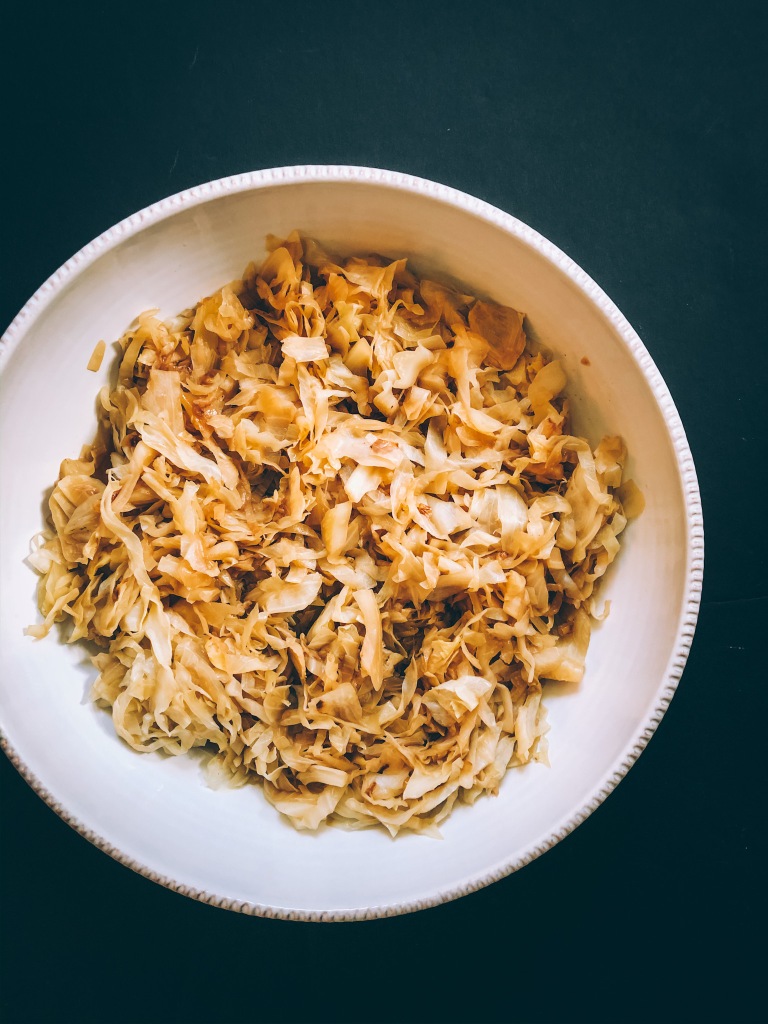
When I wake in the morning, my tendency is to go towards some distraction immediately, whether it be reading emails on my phone, putting on a podcast to hear others talk at me, or perhaps even social media, though that’s much less my go-to than it was. When I am in the kitchen a little later cycling the dishes and making breakfast, my tendency is to reach for a distraction again.
Last year, I listened to a really impactful series of short podcast episodes on BBC’s Slow Radio about Benedictine Monks meditating on the nature of silence. One of the monks spoke about listening to the pauses in the everyday noise of our life, not filling it, but letting it be there, for it’s in the pauses that we hear guidance about our life (whether you’re religious or not, I’m guessing you have experienced this). So instead of filling the early hours with someone else talking, I’ve taken to letting my attention go to the moment and what I’m doing, walking this stack of bowls from the dishwasher to the cupboard, tracking back to the dishwasher, stacking the plates and walking them across the kitchen to the cupboard, pouring the boiling water over my first cup of tea, asking Alexa for a three minute timer, turning to the other counter, picking up the pear and knife, cutting the pear into haphazard pieces and scraping them into my oatmeal pot. Making my experience of the everyday morning hours, still technically dark outside, a fits and starts routine with less distractions from the outside world.
This kitchen meditation is important because it sets my whole day. My mind has a tendency to jump around, jump ahead, form conversations that will never happen, and turn unimportant moments and experiences into catastrophes, dreams and goals into hopeless pursuits. I’m not consistently mindful in the mornings, not able to have this presence always, nor do I carry it through for the rest of the day. But the daily practice lately is helpful. When I stack days on days of this practice, I notice I become more present for longer stretches elsewhere and thus my go-to mind chatter and on-too-much stress cascade is triggered less or bounces back a little quicker.

I have this Ayurvedic Cookbook by Kate O’Donnell, which I love for its easy meal inspiration and adaptability, but even more I love the introductory section, which makes up a good chunk of the book. Part of Kate’s introduction has a story about her yoga practice. She asks a long-time practitioner about the myth of mental calm through yoga and he tells her, “Do less physical monkey business and more concentration. Count your breaths.” She tells of not being particularly impressed with this advice, but then says, “When I practiced counting my breaths, I began to wonder – who is that counting and observing, and who is that telling me that I should be doing something else? So often, we identify with only the turbulent aspects of our minds, because they tend to be the loudest, and we are in the habit of joining their conversation. It takes patience and focus to stay tuned to the calm center, but it is possible. With practice, I stopped listening to the person arguing and began truly concentrating. It was in this state of focus that I finally found calm.”
Beyond this practice of paying attention, not engaging with the chattering, turbulent mind, is food, nutrition, and lifestyle. We have consistent research now backing up what the yogis and buddhas have known for centuries –that the mind and gut are connected. That there are energetic frequencies between the foods we consume and their effects on our mind and body. That the state of mind we prepare our food in has an affect on how we process it. That the symptoms we continually fall into, anxiety, depression, fatigue, pain, inflammation, hormonal imbalances, and on –they are symptoms, not problems, but symptoms of the body trying to get our attention.

As I’m writing this, it is the beginning of NEDA week –National Eating Disorder Awareness week, and as such it has been fairly routine for me to reflect on my own place in recovery annually. This week, it’s become apparent through my morning kitchen mindfulness practice that I’ve been connecting a little more into the beginning of my recovery, which began haphazardly about 13 years ago. What worked for me then, what really was my life raft out of my mental control and self-sabotage through food restriction was really connecting to my food community. I grew up on a ranch and our family had a garden growing up. Local food was really a way of life even if it was far from the romanticized version of farm life we all think of. As I found my way into nourishing instead of punishing my body, I needed that connection again, not to awareness of my mind’s tendencies–I wasn’t that far along and mindfulness wasn’t a thing that was ever brought up in therapy–but connection to my food. Who grew my carrot? What were the steps involved in getting that _____________(name that ingredient) to my store or farm stand and then to me?

Lately, I’ve been putting more emphasis on getting to my local Saturday market. It’s inconvenient to do so, I have to drive across town on a busy weekend at an inconvenient time of day, find a place to park, walk a few blocks, get cash ahead of time, deal with traffic back home, build the extra trip into my schedule, etc. But each time I do this, I’m reminded of the faces that feed us. The farmers themselves –often the farmer’s employees but still farmers—standing for hours on concrete in the middle of winter on cold, blistery, rainy days selling what we think of as ‘expensive food for the elite’ for mere dollars, and at the end of the day and year only making the farming business work because of a spouse or partner’s off-farm job or health insurance. If that sounds totally unglamorous, it was meant to—being aware of the reality of our thoughts or situations is rarely glamourous.
But when I see the hands that feed me and stay more connected to the origins of my food, I stay on the right side of my relationship to food in the recovery process. My relationship with my body is better, I care more for the livelihood of those that grew my food, I have more gratitude for our extremely happy and spoiled ‘ladies’ (hens) who provide the best eggs I’ve ever eaten, I translate that energy of good vibes into my presence in the kitchen and my emphasis on being in a state of calm and clear-mindedness, rather than cluttered, flustered, or not caring for myself well. Again–mostly. This takes practice. It’s certainly not my go-to mindset.
So much of each of our trajectories in this lifetime are like hiking up a slippery, icy mountain. We take a step towards improvement in whatever regard and then we slip back, sometimes giving up for a while before starting anew. As eating disorders and other mental health conditions become a little less stigmatized, or at least acknowledged, it’s important to remember that the glamorous recovery stories we read or hear, of healing through this or that process or someone else staying on the straight and narrow while we slip and slide up and down the same stretch of mountain, are not actually glamorous like they may appear. William’s ladies might lay golden, delicious, nourishing eggs, but there’s a lot of chicken manure in the process. The same goes for the beautiful food brought to the town square – freezing fingers and toes, big waterproof coveralls to wash off all the winter mud before it gets there are more the reality. And have you ever picked vegetables for at least a day? I have. Once. For a day in the middle of a hot and humid July in Virginia as a community service project. It was back-breaking work. Truly uncomfortable and challenging. And there were giant spiders.
Connecting to the story of your food has a real way of anchoring in gratitude and mindfulness, whichever way that background story goes.
This National Eating Disorders Awareness week, if you’re inclined, I encourage you to try some sort of mindful connection, to the source of your food, or to the process of preparing it for yourself and/or family. Count your breaths. Tune into the process of preparing your food. Thank a farmer. And most especially, give yourself a big hug.

The Best Simple Braised Cabbage, serves about 4, if you’re lucky. ;)
Cabbage is one of my all-time favorite foods this time of year. I crave it every winter before all the new colorful fruits and vegetables start to appear again. Truthfully, I enjoy it just about every way, steamed simply with some salt and pepper is at the top of my list, then braised, roasted, boiled in a flavorful broth, or lastly shredded into some sort of raw salad creation–they’re all good. Cabbage cooked simply has a subtle natural sweetness that comes through and it’s just one of those still wintery-filling foods that walks the line between the green leaves of spring. At my local farmers market, all the different types of cabbage have been catching my eye lately. Use any type here, from bright red/purple, crinkly savoy, or your standard green variety.
a little splash of olive oil
1 medium onion, thinly sliced
1/2 tsp. salt
2 Tbs. raw apple cider vinegar
1 medium cabbage, thinly sliced
1/2 cup water
- Heat the oil in a large skillet or wok over medium heat. Add the onion and cook, stirring occasionally for about 8-10 minutes, or until tender and starting to turn golden brown.
- Turn up the heat slightly and stir in the salt, apple cider vinegar, and sliced cabbage, along with the water. When the water begins to boil, lower the heat, cover the pan, and simmer for about 30 minutes, or until the cabbage is very tender. Check and stir the cabbage a few times while cooking and add a little more water if begins to dry out or starts to stick.
- Season with pepper, additional salt as needed, and then enjoy as a simple, tasty side dish.

3 thoughts on “The best seasonal braised cabbage, kitchen morning mindfulness, and connecting to our food’s story.”